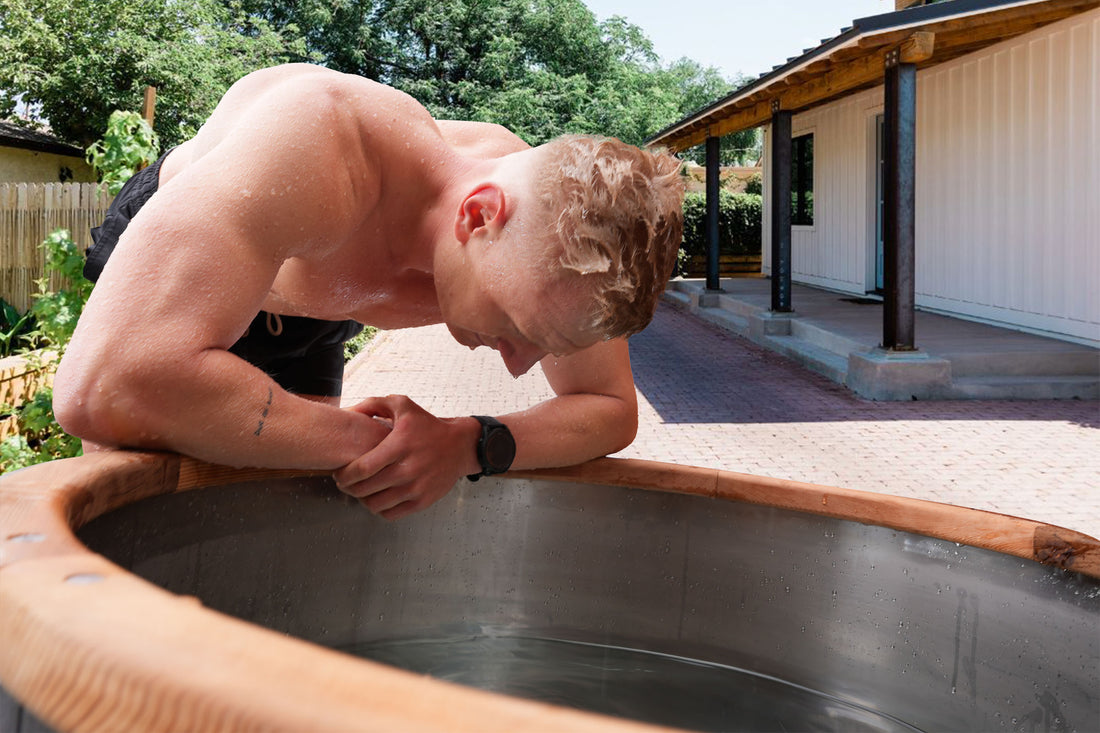
Harness the Power of Cold Water Therapy with Ice Baths
Share
Harness the Power of Cold Water Therapy with Ice Baths
Cold water therapy is more than just a trend—it's a science-backed method to boost health, recovery, and overall well-being. As highlighted by the Huberman Lab Podcast, deliberate cold exposure can benefit both brain and body. Let’s take a look at some of Huberman's key findings and advice: from reducing inflammation to improving mental resilience, ice baths are a simple yet powerful tool for athletes and wellness enthusiasts.

Safety First: Getting Started with Cold Water Therapy
Before you begin, it’s crucial to think about safety. Always make sure the water you're using is safe and avoid deliberate hyperventilation before or during cold exposure. Start with a temperature that feels cold but manageable—cold shock is real, and just like exercising, you need to find what’s right for you.
The Perfect Temperature: How Cold Should Your Ice Bath Be?
One of the most common questions is, "How cold should the water be?" The answer is dependent on the person. The key is to find a temperature that makes you think, “This is really cold, but I can stay in.” For some, that may be 15°C, while others may feel comfortable in 7°C water. The colder the water, the less time you need to stay in it. For those new to cold water therapy, start slow and work your way down.
Ice Baths vs. Cold Showers: What’s Best for You?
Ice baths are considered the gold standard but cold showers are a more accessible option that still provides many of the same benefits. Cryotherapy, while popular, is expensive and not as versatile. If you're serious about cold water therapy, investing in an ice bath can elevate your recovery routine.

Boost Energy & Focus with Cold Exposure
Cold exposure triggers a release of epinephrine and norepinephrine—also known as adrenaline and noradrenaline. These neurochemicals help improve focus and energy levels. Many people notice that after cold exposure, they feel more mentally and physically energized. This is why a lot of people find it a great way to start the day.
Build Resilience and Mental Toughness
One of the most powerful benefits of cold water therapy is how it trains your mind to manage stress. By voluntarily enduring cold exposure, you develop resilience and grit. This skill helps you manage real-world stressors with a calm, clear mind, giving you a mental edge in both personal and professional settings.
Enhance Your Mood
Cold exposure also boosts dopamine levels, which can elevate your mood and help you stay focused. Even brief exposures can leave you feeling more motivated and happier for hours afterward.

Metabolism and Cold Exposure
Cold exposure burns calories by making your body work harder to stay warm. More importantly, it can convert white fat into brown fat, which increases metabolism and helps your body adapt to cold environments more easily over time.
A Simple, Science-Backed Protocol
To get the benefits of cold exposure, aim for a total of 11 minutes of cold water immersion per week. That could be spread across 2-4 sessions, with each session lasting 1-5 minutes. You don’t need to overdo it—consistency is more important than duration.
Cold Water for Recovery
Cold water therapy can also aid physical recovery, especially after intense workouts. Short bursts of cold exposure help reduce muscle soreness and improve recovery times. However, if you’re training for strength or muscle growth, wait at least 6-8 hours after exercise to take your ice bath, as it can interfere with muscle gains if done too soon.

When to Use Cold Exposure
Cold exposure is best done early in the day. After cold immersion, your body heats up, which can interfere with sleep if done too close to bedtime. Try using cold therapy in the morning to feel energized and ready to tackle the day.
Increase the Challenge: Movement During Cold Exposure
For those looking to build more resilience, try moving your limbs during cold water immersion. This breaks the thermal layer around your body, making the water feel colder and increasing the challenge. It’s a great way to enhance the mental and physical benefits of cold exposure without lowering the water temperature.
Conclusion
Cold water therapy, when done correctly, offers a host of benefits—from boosting mood and energy to improving recovery and resilience. Whether you’re an athlete looking to speed up recovery or someone seeking to improve your overall well-being, deliberate cold exposure is a powerful tool that can transform your health. Try adding it to your routine and experience the difference for yourself.
Ready to experience the transformative benefits of cold water therapy? Shop with us at 3° H2O for our premium Cold Water Therapy Wooden Composite Ice Baths. To view our ice bath, CLICK HERE and take your wellness journey to the next level!
